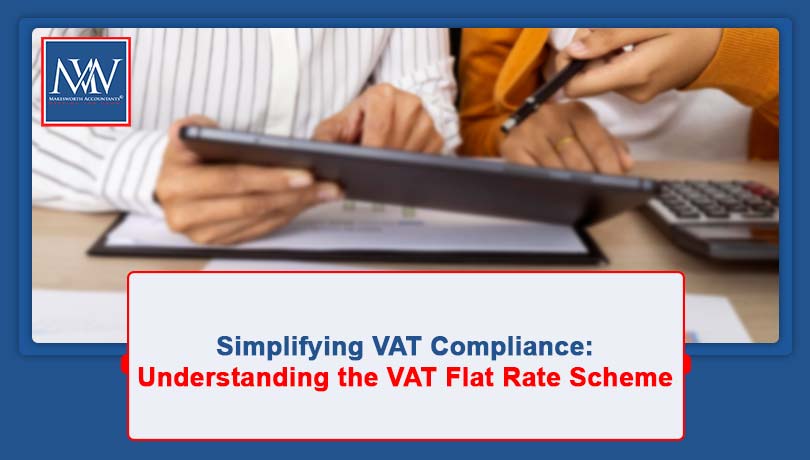-
info@makesworth.co.uk
-
Mon - Fri: 9:30 AM - 6:00 PM

The VAT Flat Rate Scheme is designed to ease the burden of VAT compliance for small businesses. The scheme allows companies to focus more on their core operations by simplifying calculations and reducing paperwork. Here’s an overview of how the scheme works, its eligibility criteria, and considerations for determining if it suits your business.
The VAT Flat Rate Scheme simplifies how businesses calculate and pay VAT. Instead of calculating the difference between VAT charged on sales and VAT paid on purchases, businesses under this scheme pay a fixed percentage of their VAT-inclusive turnover to HMRC. This percentage varies depending on the business sector and whether it qualifies as a limited-cost business.
To join the VAT Flat Rate Scheme, a business must:
The applicable flat rate percentage depends on the type of business. Detailed percentages for various sectors can be found on the UK Government’s website.
What is a Limited Cost Business? A business is considered a limited cost business if its expenditure on relevant goods is less than:
Relevant goods exclude services (e.g., advertising, accounting), car fuel (unless in the transport sector), and rent. Businesses incurring significant costs in such excluded categories may find the traditional VAT scheme more advantageous.
A photography business opts for the VAT Flat Rate Scheme. In its first quarter:
Since it is not classified as a limited-cost business, it applies its sector’s flat rate of 11%. As a first-year VAT registrant, the business benefits from a 1% discount, reducing its rate to 10%.
VAT Payable:
10% of £24,000 = £2,400.
Businesses using the VAT Flat Rate Scheme generally cannot reclaim VAT on purchases. However, an exception exists for capital goods costing more than £2,000 that are not intended for resale. In such cases, VAT can be reclaimed separately.
While the VAT Flat Rate Scheme simplifies VAT administration, it is not a one-size-fits-all solution. The 16.5% rate for limited-cost businesses may erode potential savings, and businesses with significant costs on excluded goods and services may find traditional VAT accounting more cost-effective.
Recommendation:
Consult VAT Notice 733 and perform detailed calculations to determine if the scheme aligns with your business needs.
For more information, Book a Free Consultation